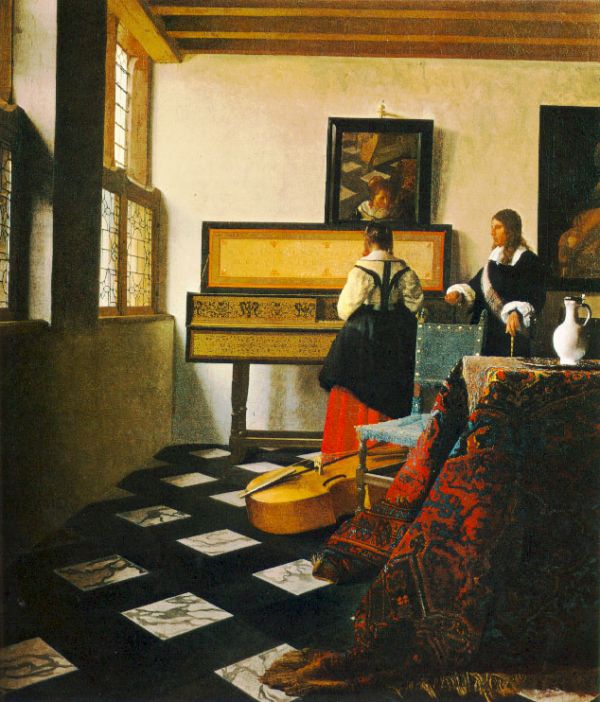
The Music Lesson
London, Buckingham Palace
74x64 1662-65
This famous painting was executed by Vermeer at the height of his powers. The formal, almost abstract, composition is presented as patterns of color and shape, but at the same time the ambiguity of the human relationship draws us in. The perfectly rendered window provides a frame at the left, and the spare horizontality of the roof-beams frames the picture at the top. The diagonal pattern of marble floor-tiles draws our eye into the picture and the pattern of rectangles on the back wall would be spoiled if any one of them were moved; in this geometric composition, one can imagine a preview of another great Dutch artist, Piet Mondrian.
The woman playing the clavecin has her back to us, so that we see composition and human relationship rather than her face. But she is reflected in the mirror above her. The real and reflected heads are not consistent: in the mirror she seems to be turning towards the man. It has been suggested that the mirror shows part of the artist's easel, drawing us into the picture in a very explicit way.
As with Girl Interrupted at her Music, it is not clear if the man is a teacher or a lover. Behind the woman is a bass viol, which perhaps the man has been playing in duet. On the clavecin, there is an inscription, Musica Letitiae Comes Medicina Dolorum, [Music is the Companion of Joy, the Medicine of Sorrow]. At lower right is a richly decorated oriental carpet, anchoring the eye and providing a separation between viewer and subjects, on it is the familar, prominent white pitcher, which may contain wine; are we to conclude that the couple are about to descend into sin, lubricated by demon drink?